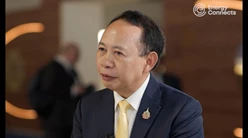Global energy investment to cross $3.3 trillion in 2025 amid energy security concerns
Global energy investment is set to increase in 2025 to a record $3.3 trillion despite headwinds from elevated geopolitical tensions and economic uncertainty, according to the International Energy Agency.
Investment in oil, natural gas and coal is set to reach $1.1 trillion, while the data trends reflect that the global LNG market is set to experience its largest ever capacity growth between 2026 and 2028. Investment in clean technologies – renewables, nuclear, grids, storage, low-emissions fuels, efficiency and electrification – is on course to hit a record $2.2 trillion this year, reflecting the growing influence of industrial policy, energy security concerns and the cost competitiveness of electricity-based solutions, according to the 2025 edition of the IEA’s annual World Energy Investment report.
Key driver of global investment
“Amid the geopolitical and economic uncertainties that are clouding the outlook for the energy world, we see energy security coming through as a key driver of the growth in global investment this year to a record $3.3 trillion as countries and companies seek to insulate themselves from a wide range of risks,” said IEA Executive Director Fatih Birol. “The fast-evolving economic and trade picture means that some investors are adopting a wait-and-see approach to new energy project approvals, but in most areas we have yet to see significant implications for existing projects.”
Investment in new liquefied natural gas (LNG) facilities is on a strong upward trajectory as new projects in the United States, Qatar, Canada and elsewhere prepare to come online. Between 2026 and 2028, the global LNG market is set to experience its largest ever capacity growth, the IEA said. Lower oil prices and demand expectations are set to result in the first year-on-year fall in upstream oil investment since the Covid slump in 2020, according to the report. The expected 6% drop is driven mainly by a sharp decline in spending on US tight oil.
Global spending on upstream hydrocarbons
Over the past decade, China’s share of global clean energy spending has risen from a quarter to almost a third, underpinned by strategic investments in a wide range of technologies, including solar, wind, hydropower, nuclear, batteries and EVs. At the same time, global spending on upstream oil and gas is gravitating towards the Middle East, the IEA said.
Globally, spending on low-emissions power generation has almost doubled over the past five years, led by solar PV. Investment in solar, both utility-scale and rooftop, is expected to reach $450 billion in 2025, making it the single largest item in the global energy investment inventory. Battery storage investments are also climbing rapidly, surging above $65 billion this year, the IEA said.
Nuclear capacity growth
Capital flows to nuclear power have grown by 50% over the past five years and are on course to reach around $75 billion in 2025. Rapid growth in electricity demand also underpins continued investment in coal supply, mainly in China and India. In 2024, China started construction on nearly 100 gigawatts of new coal-fired power plants, pushing global approvals of coal-fired plants to their highest level since 2015.
However, in a worrying sign for electricity security, investment in grids, now at $400 billion per year, is failing to keep pace with spending on generation and electrification. Maintaining electricity security would require investment in grids to rise towards parity with generation spending by the early 2030s. However, this is being held back by lengthy permitting procedures and tight supply chains for transformers and cables.
Global spending patterns
The IEA found that spending patterns remain very uneven globally – with many developing economies, especially in Africa, struggling to mobilise capital for energy infrastructure. Today, Africa accounts for just 2% of global clean energy investment. Despite being home to 20% of the world’s population and rapidly growing energy demand, total investment across the continent has fallen by a third over the past decade due to declining fossil fuel spending and insufficient growth in clean energy.
To close the financing gap in African countries and other emerging and developing economies, international public finance needs to be scaled up and used strategically to bring in larger volumes of private capital, according to the report.





